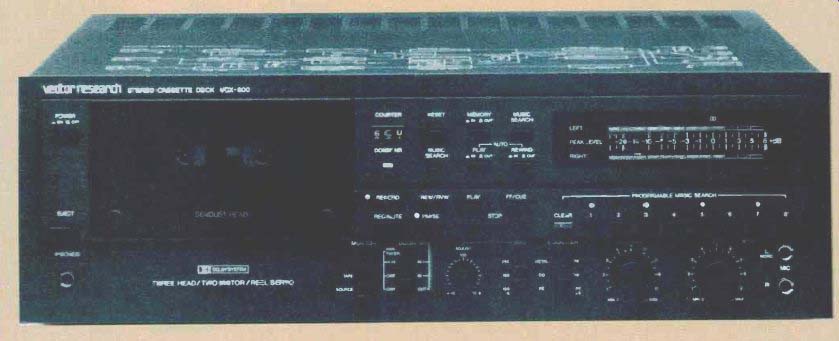
Manufacturer’s Specifications:
Frequency Response: 30 Hz to 16 kHz, to 18 kHz with CrO2 tape, to 20 kHz with metal tape.
Signal/Noise Ratio: 56 dBA, 65 dBA with Dolby NR.
Separation: 33 dB.
Crosstalk: Down 63 dB.
Erasure: 65 dB.
Input Sensitivity: Mike, 0.25 mV; line, 60 mV.
Output Level: Line, 580 mV.
Flutter: 0.06 percent W rms.
FF & RWD Times: 90 seconds for C-60.
Dimensions: 17 1/8 in. (440 mm) W x 5 1/8 in. (142 mm) H x 14 1/4 in. (375 mm) D.
Weight: 22 lbs. (10 kg).
Price: $750.00.
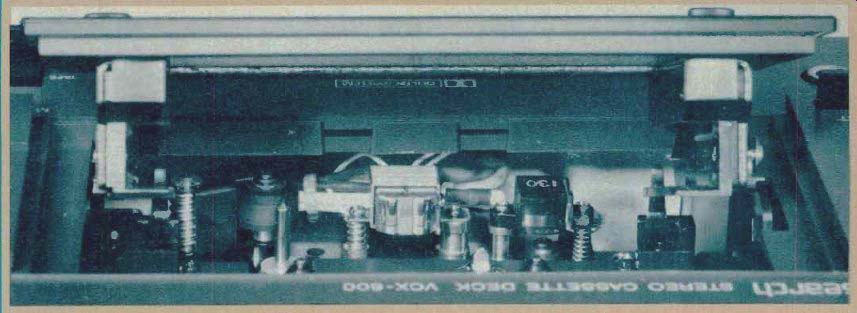
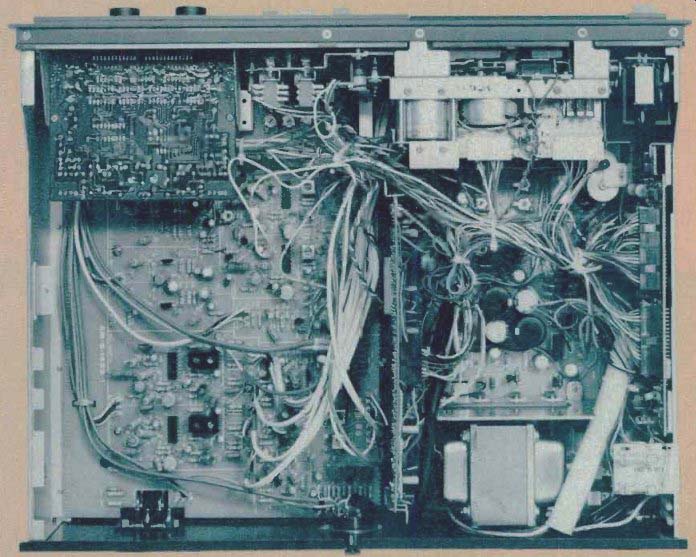
The Vector Research VCX-600 cassette deck offers a combination of generally excellent performance and several worthwhile convenience features. The three-head design aids in achieving good responses and provides simultaneous monitoring of playback while recording. Access to the heads and capstan for maintenance purposes is very easy, particularly with the clear cover removed. A light in the back of the cassette well facilitates checking tape usage. Tape motion is controlled with tight-touch bar switches, and there are useful status lights for each function., save Stop. The logic used al lows making any desired change in function, including adding Record to Play (the desirable flying start). If rewind or fast-forward are pushed while in Play, however, the deck goes into review or cue--sampling the signal on the tape--for as long as the switch is held in. It is convenient to have a cueing feature, and the Vector Research approach is a good one. To go to regular fast winds :t is necessary to push Stop first. Rec Mute is a momentary-contact bar switch with its own red indicator, just below Record--a good design.
Memory-type functions in the VCX-600 include rewind to stop at "000" and rewind to play at "000." Pushing Music Search while in Play results in a flashing indicator; pushing RWD or FFWD will then shift the deck into a fast wind. As soon as a break in the program is detected (four seconds play time minimum), the wind stops, and the deck starts playing. There is also programmable Music Search which al lows making any combination of up to eight selections. It can be used at any time when in play to fast wind to later pieces, as chosen, skipping any of those not selected. This scheme is perhaps not as flexible as some in other decks, but it is easy to understand and has the play-skip capability needed_ Lever switches with good snap action allow selection of Tape/Source monitoring, Out/In/In-with-MPX Dolby NR, Fe/Co/Metal bias, and 120/70/70 uS EQ. There is a useful bias trim pot, which has a worthwhile center detent. The input and output level pots are of multi-step design with good-sized knobs. Friction between the two sections of the input pot was on the high side, making interchannel level adjustments slightly difficult. The meters consist of horizontal LED ladders with yellow segments from "-20" to "0" (also Dolby level), and red above that--easily seen at all levels of lighting. On the other "nand, panel designations were not so easily read in dim lighting. The power and eject buttons and the jacks for microphones and headphones complete the front-panel features. It was odd to find that the output pot did not control the level to headphones, which is desirable.
For the novice, there is a handy block diagram on the top cover of the deck.
The line-in/line-out phono jacks are on the rear panel, as is a line fuse and a socket for the optional remote control. After removal of the top and side cover, inspection was made of the internal construction. The soldering on the p.c. boards was excellent, with substantially no flux residue. The live boards were interconnected primarily with multi-pin cables and plugs, though there was some wirewrap. Parts were identified on the cards, as were most adjustments. There were two power-supply fuses in dips, readily accessible. The chassis construction was of box-type, and it was quite rigid.
Performance
The playback responses obtained with standard alignment tapes were quite flat, with the exception of just over 2 dB droop at the highest frequency for each equalization. Play speed was 0.65 percent fast, and meter level indications were within a dB for both channels.
A pink-noise source and a 1/3-octave RTA were used to check about 20 different formulations for the best match to the VCX-600. The adjustable bias added some tapes to the "good" list, but the deck needs a record-sensitivity adjustment to get the best out of some other tapes while in Dolby mode. TDK AD, Maxell UD XL-II and Luxman XM-IV were selected for all additional tests, but the results were quite close with Maxell UD XL-, Sony SHF, TDK OD, Luxman XM II, TDK SA and SA-X, Ampex MPT, and TDK MA-R. Swept--frequency responses were run with the three selected tapes (Figs. 1, 2 and 3) at Dolby level and 20 dB below that, both with and without Dolby. As the plots and the listings in Table 1 show, the results were very good, and there was very close agreement between modes, except at the very highest frequencies.
Playback of a recorded 10-kHz tone showed B channel lagging A by just 45 degrees, much better than most recorders with similar head designs. The relative phase jitter was slow in nature and just 15 degrees, close to the best ever observed.
Output signal polarity matched that of the input: In other words, positive peaks in the music being recorded remained positive peaks. The bias control had a range of-2.0 to +1.2 dB for Maxell UD XL-11 with a 10-kHz tone. The multiplex filter was 3 dB down at 16.2 kHz, 33 dB down at 19 kHz. Bias in the output during recording was satisfactorily low. Separation between channels was 55 dB at t kHz, and crosstalk between adjacent tracks of opposite play direction was down at least 80 dB--both excellent figures. Erasure of a 1-kHz tone was fine, over 80 dB, while erasure of a 100-Hz tone with metal tape was 62 dB.
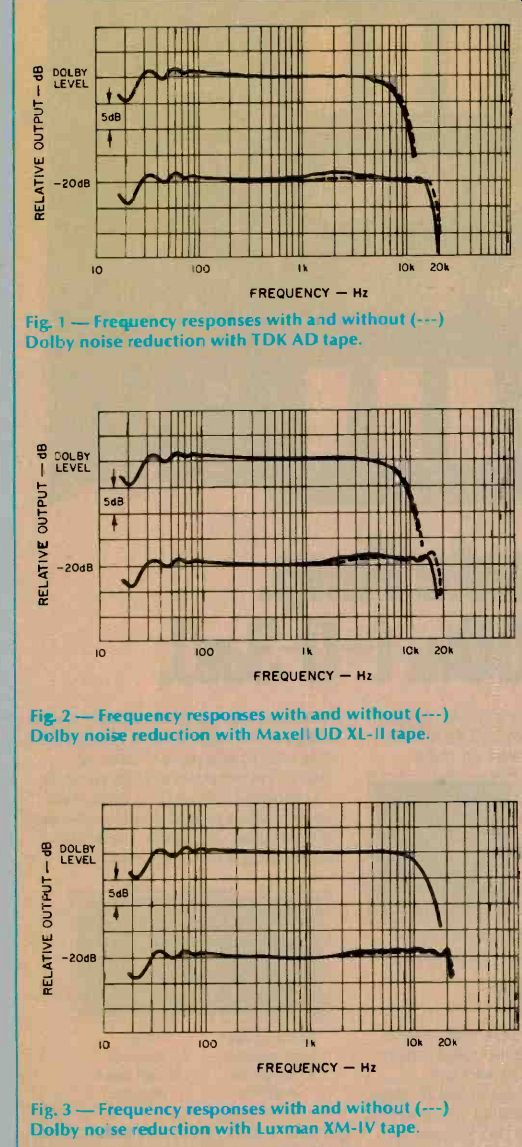
Fig. 1--Frequency responses with aid without (---) Dolby noise reduction
with TDK AD tape.
Fig. 2--Frequency responses with and without (---) Dolby noise reduction with Maxell UD XL-II tape.
Fig. 3--Frequency responses with and without (---) Dolby no se reduction with Luxman XM-IV tape.
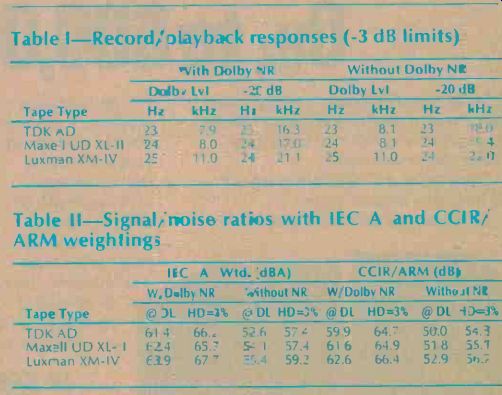
Table I--Record,/Playback responses (-3 dB limits)
Table II--Signal noise ratios with IEC A and CCIR, ARM weighting.
A spectrum analyzer was used to get data on HDL1 (third harmonic distortion level) in Dolby mode at 1 kHz for the three tapes, from 10 dB below Dolby level to the point where HDL3 equaled three percent. The results are plotted in Fig. 4, which shows the superiority of the ferric tape for low distortion. The levels of the second and fifth harmonics were ve-y low with this Vector Research deck. Without Dolby, HDL3 at the 1-kHz test frequency was somewhat higher, in general, than with the noise reduction. HDL1 vs. frequency was measured from 30 Hz to 7 kHz in Dolby mode with Luxman XM IV tape at 10 dB below Dolby level. The results were quite good at mid and high frequencies (Fig. 5), though HDL3 was higher at the low end of the band. The excellent signal-to noise ratios, referenced to Dolby level and to the 1-kHz 3%-distortion points, are listed in Table II for both IEC "A" and CCIR/ARM weightings, both with and without Dolby NR.
The metal tape does have the best figures, but not by that much. The Dolby-level frequency-response plot in Fig. 3 more aptly shows the new formulation's superiority- Better response at high frequencies at high record levels.
Input sensitivities were 0.24 mV for mike and 53 mV for line-good figures and slightly better than spec. Input over loads occurred at 40.3 mV with mike and about 31 V for line, both excellent. The output clipped at a level equivalent to +17 dB relative to meter zero, 3.87 V actual. The two sections of the input pot tracked within a dB from maximum down almost 60 dB--excellent! The output pot wasn't quite as good, but it nonetheless kept to the same tolerance for 45 dB--good performance. The line output levels averaged 572 mV for meter zero indications. The headphone output to 8 ohms was 32 mV, which was satisfactory for most phones but too low a level for others. The LED-ladder type meters have a total of 12 segments each, with finer steps around zero.-he thresholds were reasonably accurate, though the increments around meter zero were less than marked: "-3" and "-1" were-2 and-0.6 dB actual, for example. The tone burst tests showed that about 150-mS duration was required for full response, and also that single-polarity bursts were not detected for their actual shift in peak level. The meters, therefore, could be called "fast response" in comparison with VU meters, but not "peak level." The frequency response of the meters was down 3 dB at 18 Hz and 21.8 kHz.
A 3-kHz tone was recorded with the line voltage exactly at 120 V On playback, the flutter meter's drift output was-e corded with three line-voltage settings. Fig. 6 shows that there are some perturbations at 120 V, that there is a very slight increase in speed with the voltage reduced to 110 V, and that there was a somewhat greater decrease in speed, perhaps 0.05 percent, with line voltage raised to 130 V. Flutter tests were conducted at the normal 120 V to get both W rms and wtd. peak values. There were three trials for each standard, introducing some change, such as some fast winding, before the next measurement. The flutter was quite low, better than most decks. The average wind time for a C-60 was 88 seconds, perhaps a little on the slow side. Changing modes usually took less than a second.
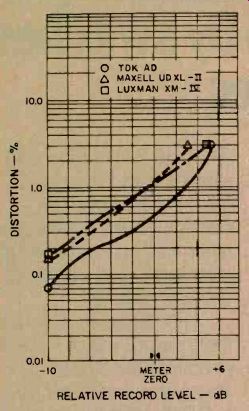
Fig. 4--Third harmonic distortion vs. level in Dolby mode at--kHz with TDK
AD, Maxell UD XL-II aid Luxman X.M-IV tapes.
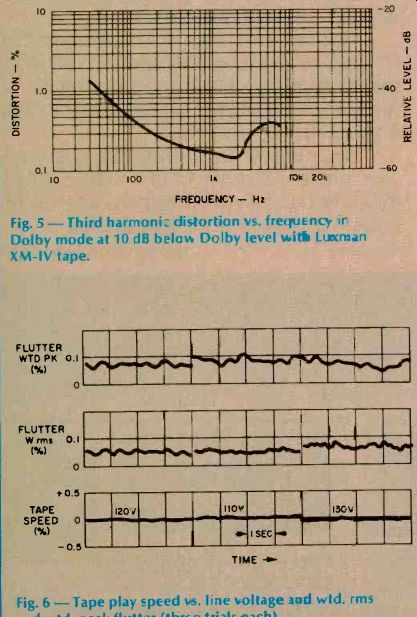
Fig. 5--Third harmonic distortion vs. frequency, in Dolby mode at 10 dB
below Dolby level with Luxman XM-IV tape. Fig. 6--Tape play speed vs. line voltage acid wtd. rms
and wtd. peak flutter (three trials each).
Use and Listening Tests
Cassette loading and removal and maintenance tasks were all easily accomplished. All controls and switches were completely reliable, and operation was aided by the complement of status lights. The owner's manual has good text, but it could benefit from more detail on some of the many logic combinations. Schematics are shown for the five major p.c boards, and there's also the block on the top of the unit. A separate, single-sheet, stiff-paper "Operation Guide" has a handy summary of the basic instructions for all of the various functions.
A variety of sources were recorded for a listening assessment of the VCX-600 performance. Discs included Acoustic Research's-he Sound of Musical Instruments," Mahler's Eighth Symphony with Solti and the Chicago Symphony Orchestra, and recent Virgil Fox records. Pink noise was also used with particular attention to changes with Dolby NR in,' out switching. Setting levels seemed to be fussier than expected. The conclusion was that greater resolution in the metering would have been of some aid.
In general, the results were excellent. Record, pause, and stop sounds were all very low, down in the tape noise. While setting levels to obtain maximum recorded signal on the tape together with low distortion seemed fussier than expected, longer experience with these meters would have effectively minimized any difficulty in setting up to handle such wide dynamics as occur with the soprano voices in the Mahler.
The Vector Research VCX-600 cassette deck has very good to excellent performance in the majority of important areas. Priced at $750 00, this really isn't an inexpensive deck, though there are decks costing twice as much. Coupling a number of convenience features with the deck's good basic performance should make the VCX-600 appeal to a goodly number of audiophiles.
-Howard A. Roberson
(Source: Audio magazine, Dec. 1980)
= = = =
Also see:
Vector Research VCX-800 Cassette Deck (Equip. Profile, Jan. 1983)